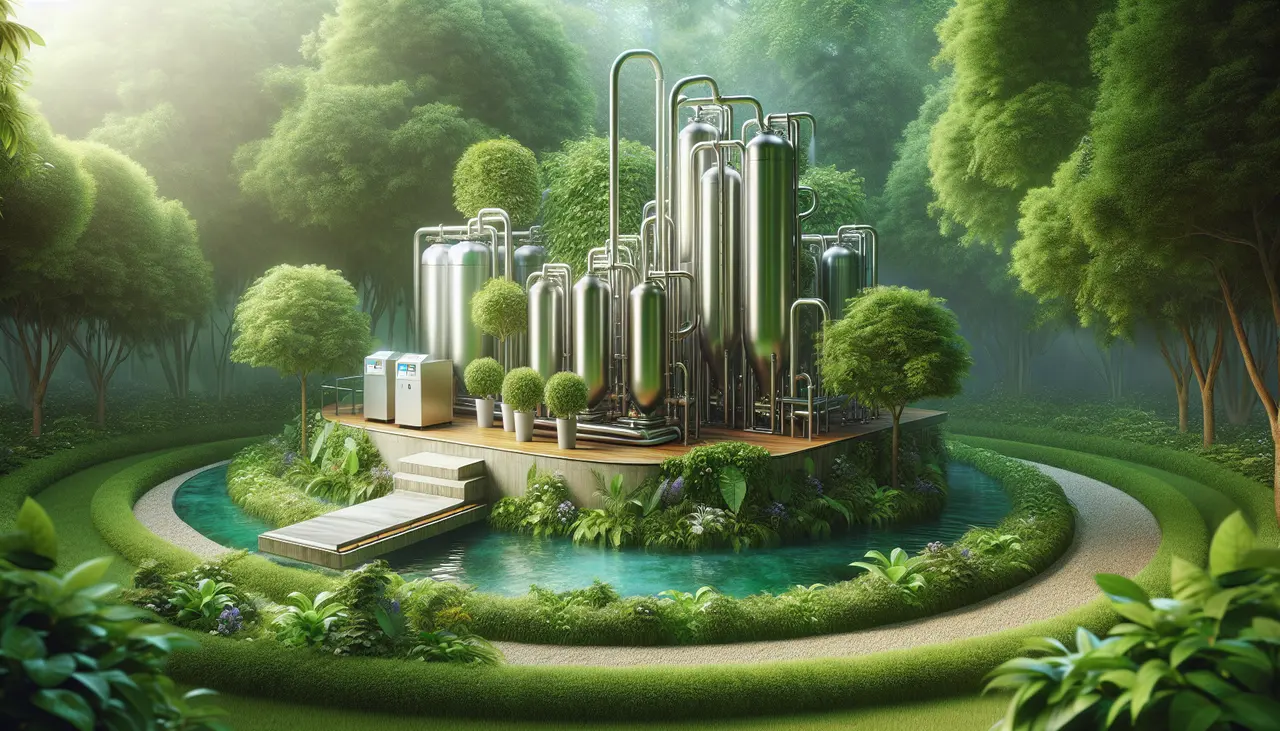Introduction to Organic Cremation: A Sustainable Choice
Organic cremation, also known as water cremation or alkaline hydrolysis, is shifting the funeral scene in Austin. It’s a green alternative to traditional cremation or burial. Here’s the deal: instead of burning the body or burying it, organic cremation uses water and an alkaline solution to break the body down to its chemical components. This method is kinder to the environment. Why? Well, it uses over 90% less energy than traditional cremation and doesn’t release harmful emissions into the air. Plus, what you’re left with is a nutrient-rich solution that can safely return to the earth, and bone ashes that can be kept, just like with regular cremation. This approach appeals to those looking to leave a minimal environmental footprint. Simply put, it’s a sustainable choice for those thinking ahead. In Austin, this progressive option is gaining traction, offering a meaningful way to say goodbye without harming the planet.
What is Organic Cremation?
Organic cremation, also known as water cremation or aquamation, is a gentle and eco-friendly alternative to traditional flame cremation. It uses water and a process called alkaline hydrolysis to break down the body. This means the body is placed in a solution of water and potassium hydroxide at a high temperature, which speeds up the natural decomposition process. What you get in the end is bone ashes and a liquid that can safely return to the earth. It’s a process that’s catching on in Austin for being kinder to our planet. With organic cremation, the carbon footprint is significantly less than with flame cremation or burial. It uses less energy and emits no harmful gases into the atmosphere. So, choosing organic cremation can be seen as a final act of kindness to the earth.
The Environmental Benefits of Organic Cremation
Organic cremation, known also as water cremation or alkaline hydrolysis, presents a green alternative to traditional fire-based cremation and burials. It’s making waves in Austin for its lower environmental impact. First off, it uses significantly less energy. Traditional cremation burns fossil fuels and releases carbon dioxide, contributing to air pollution and climate change. Organic cremation, on the other hand, uses water and an alkali solution to gently dissolve the body, slashing energy consumption by about 90%.
Next, let’s talk emissions. Fire cremations emit mercury and other pollutants due to the burning of dental fillings and prosthetic parts. Water cremation cuts out these harmful emissions altogether, making it a cleaner choice.
Then there’s the land issue. Traditional burials often involve embalming chemicals, which can seep into the ground, and require space in increasingly crowded cemeteries. Organic cremation leaves behind a sterile liquid that can safely go back to nature, and the remaining bone powder can be returned to loved ones, similar to ashes, without taking up land space.
Lastly, organic cremation aligns with the cycle of life philosophy, supporting the idea of returning to the earth in a manner that nourishes it, rather than harming it. In Austin, where environmental consciousness runs deep, this method is gaining ground as a respectful, eco-friendly way to say goodbye.
How Austin is Leading the Way in Organic Cremation Practices
Austin is doing something big in the world of final goodbyes. It’s ramping up its game with organic cremation, a method that’s not just eco-friendly but also leans into the future of funeral practices. Why? Because it uses water instead of fire, making it a cleaner choice for the planet. This technique, also known as aquamation or alkaline hydrolysis, breaks down the body using a solution of water and potassium hydroxide. This method is incredibly efficient, turning the body into ash without the smoke or emissions you’d get from traditional cremation.
The cost? It’s competitive with standard cremation but much gentler on Earth. Austin’s funeral homes that offer organic cremation are seeing more families opting for this method, attracted by its lower environmental impact and the idea of a softer return to nature. Plus, the ashes returned to families are whiter and more powdery, making for a more pleasant memorial.
Austin isn’t just following a trend; it’s setting a standard in how we think about our final impact on the planet. It’s a call to rethink tradition for something better. In a city known for keeping things weird, organic cremation stands out as a thoughtful choice, blending respect for the departed with care for the world they leave behind.
Comparing Traditional and Organic Cremation Methods
When we talk about saying goodbye, traditional burials have always been the go-to. But, times are changing. Organic cremation, also known as water cremation or alkaline hydrolysis, is stepping up as the eco-friendlier option. Here’s the breakdown: traditional cremation burns fossil fuels and releases carbon dioxide, making it less green. It involves placing the body in a furnace at high temperatures, turning it into ashes. On the flip side, organic cremation uses water and lye. The body is placed in a solution of water and potassium hydroxide, gently breaking it down to its chemical components without the smoke or high energy costs. It’s kinder to the planet, using over 90% less energy and emitting no carbon dioxide. Traditional methods take up valuable land and involve chemicals for embalming, while organic cremation brings us back to the earth without taking anything more. In Austin, this shift towards organic cremation is not just about being eco-conscious. It’s about giving families a softer, simpler option that honors their loved ones while respecting the planet. Whether you lean towards the traditional or are open to the new, understanding these differences can guide you through your choices, making the farewell a meaningful one.
The Process: What Happens During an Organic Cremation?
Organic cremation, also known as water cremation or alkaline hydrolysis, is a green alternative to traditional cremation methods. So, let’s break it down simply. First, the body is placed in a stainless steel vessel. Next, a solution of water and potassium hydroxide is added. This mixture is then gently heated, which speeds up the natural process that a body goes through after burial. But instead of taking years, it takes just a few hours.
By the end, what remains are bones, which are then dried and turned into a white, powdery substance that can be returned to the family, much like ashes from a traditional cremation. The rest of the liquid? It’s actually sterile and contains no DNA, so it can safely be returned to the environment. Throughout this whole process, no emissions are released into the atmosphere, making it an eco-friendly choice. It’s simple, clean, and respectful to both the deceased and our planet.
Emotional and Spiritual Considerations
Choosing organic cremation in Austin isn’t just about going green; it strikes deep chords in the heart and the mind. Many find that this method, focusing on returning the body to earth in a gentle, respectful manner, aligns with their spiritual beliefs. It’s seen as a more loving goodbye, where the essence of the person merges with nature, bringing comfort and peace to grieving families. This approach also opens up space for diverse religious or spiritual interpretations, fitting various beliefs about life, death, and what follows. For families, the choice can offer a profound sense of doing right by their loved ones, easing the emotional toll typical funeral practices sometimes heighten. The simplicity and thoughtfulness of organic cremation can provide a tranquil closure and a meaningful way to honor a life in alignment with the values of simplicity, environmental stewardship, and respect for the natural cycle.
The Cost of Organic Cremation in Austin
The price for organic cremation, also known as bio-cremation or water cremation, in Austin might surprise you. It’s not just about being eco-friendly; it’s also kind to your wallet. On average, organic cremation in Austin costs between (1,500 and )3,000. This range is pretty competitive when you compare it to traditional burial costs, which can easily climb past $7,000. Why the difference? Organic cremation uses less resources and is a simpler process. There’s no need for expensive caskets or burial plots. Plus, many choose not to have a traditional service, which also cuts down costs. Remember, the exact price can vary depending on the provider you pick and the services you want. But overall, going green with organic cremation in Austin not only benefits the planet but also your budget.
How Organic Cremation is Influencing Funeral Traditions
Organic cremation, also known as water cremation or alkaline hydrolysis, is a green alternative to traditional cremation methods. It’s gaining traction in Austin, changing how people think about funeral practices. This method uses a mix of water and potassium hydroxide to break down the body, leaving behind only the bones, which are then turned into a white, powdery substance similar to ashes received from fire cremation. The difference is that organic cremation is much kinder to the environment. It emits no pollutants into the air and uses significantly less energy.
As this eco-friendly option becomes more familiar, Austin’s funeral traditions are evolving. People are now considering the environmental impact of their final send-off. With climate change and sustainability concerns on the rise, the shift towards practices like organic cremation shows a growing awareness and desire for more environmentally friendly funeral options. This practice is not just influencing funeral traditions in Austin but also sparking conversations about sustainable choices in life and death across the globe. It’s clear that organic cremation is paving the way for a change in how we honor our loved ones, making a final act that’s as kind to the earth as it was to those we cherish.
Looking Ahead: The Future of Funeral Practices with Organic Cremation
The way we say goodbye to our loved ones is changing, thanks to organic cremation. This method, also known as aquamation or alkaline hydrolysis, is gaining momentum in Austin and across the globe as a green alternative to traditional burial and cremation methods. It’s a game-changer for those who are environmentally conscious. But what does the future hold? Well, as awareness grows, we’re seeing a shift. More people are choosing organic cremation for its minimal environmental impact. It uses water and alkaline solutions to break down the body, which means no emissions of harmful gases and a smaller carbon footprint. Plus, it’s gentler on the earth, using a fraction of the energy required for fire cremation. Funeral homes in Austin are adapting, offering these services to meet this growing demand. As we move forward, expect organic cremation to become a more mainstream choice, leading to broader acceptance and possibly even new innovations in how we honor our departed. This method not only aligns with the values of those who lived their lives with an eye on sustainability but also offers a way to leave a final legacy that protects the planet. In a world increasingly concerned with environmental issues, organic cremation stands out as a forward-thinking option for our final farewells.







